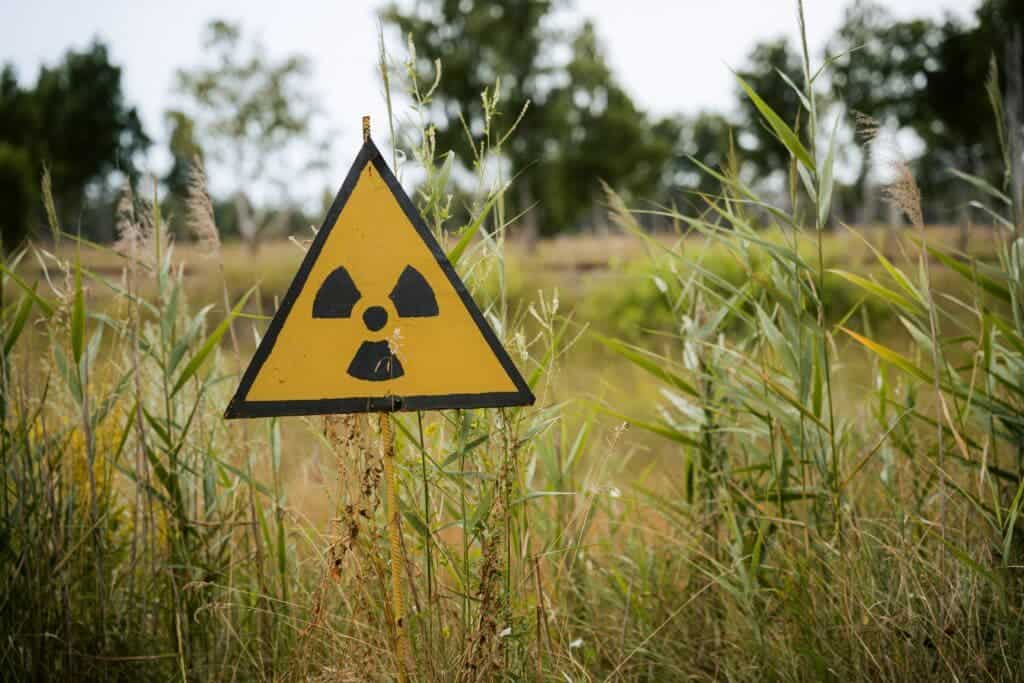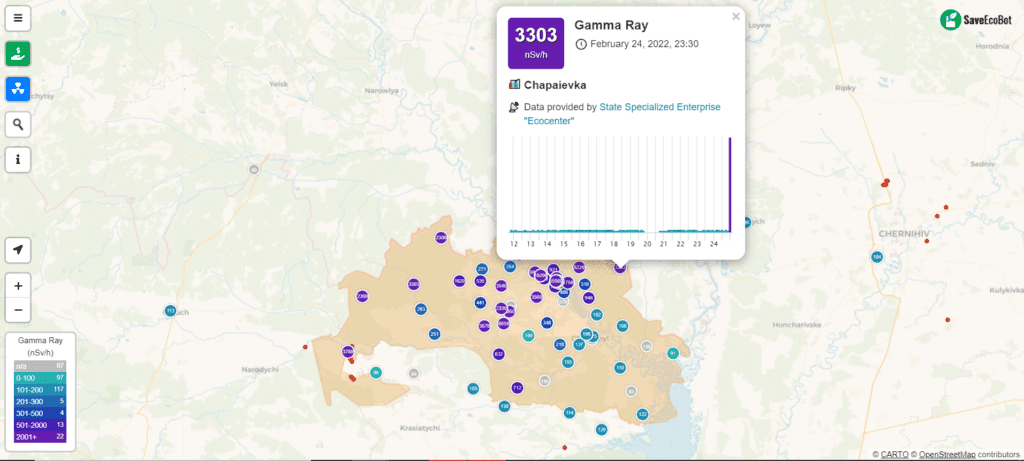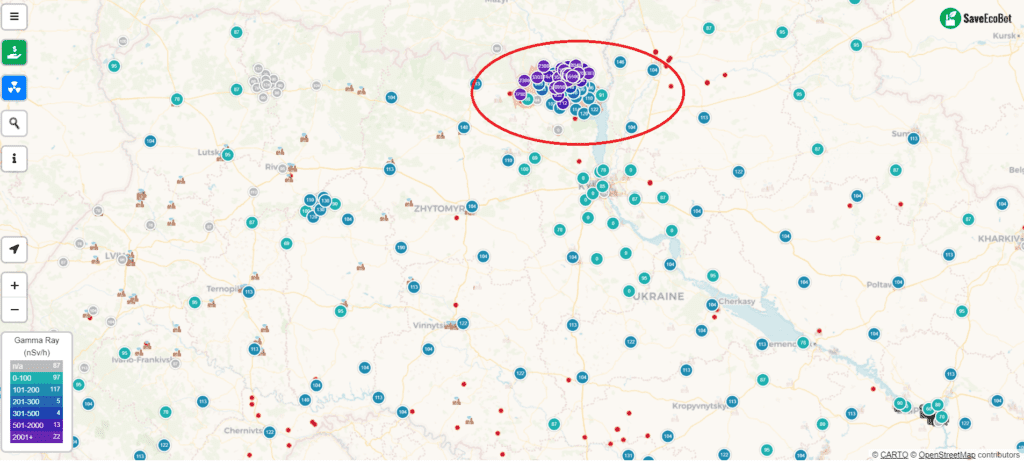As the news of Ukraine facing a large-scale Russian attack erupted, it sent a shockwave across the entire world. These are frightening times for everyone, and the invasion is scary on many different levels.
Among the many events that shocked the world about this conflict was the report that following some armed fights around Chernobyl, the radiation levels around the sealed nuclear plant have started to rise. While this is true, and the situation around Chernobyl is unclear (and technically classified), this is unlikely to spiral into the worst-case nuclear scenario.

The Chernobyl meltdown happened in 1986, but it still strikes fear into the hearts of people — and it’s understandable as, to this day, it is the worst nuclear accident in the history of mankind. The still-radioactive Chernobyl plant is currently contained within a giant concrete dome, but there are fears that fighting around the containment area could damage the concrete and release a new wave of radiation.
Ukrainian officials have confirmed that Russian forces have forcefully seized control of the Chernobyl plant and its surroundings. Ukrainian Presidential adviser Mykhailo Podoliak said it was a “totally pointless attack” on Thursday that amounted to “one of the most serious threats in Europe today”.
Ukrainian president Volodymyr Zelenskiy echoed this, emphasizing the bravery of the Ukrainian soldiers that defended Chernobyl (or Chornobyl, as it is sometimes spelled).
“Our defenders are giving their lives so that the tragedy of 1986 will not be repeated,” President Volodymyr Zelensky wrote earlier on Twitter. “This is a declaration of war against the whole of Europe,” he added
However, Ukrainian forces lost the battle around Chernobyl and were forced to release control of the plant and its surroundings to the Russian military. Reports are coming in that Chernobyl staff are being “held hostage” by Russian soldiers. White House press secretary Jen Psaki condemned this event in a news conference:
“We are outraged by credible reports that Russian soldiers are currently holding the staff of the Chernobyl facilities hostage. This unlawful and dangerous hostage-taking, which could upend the routine civil service efforts required to maintain and protect the nuclear waste facilities, is obviously incredibly alarming and gravely concerning.
We condemn it and we request their release.”
The situation was confirmed by the UK Ministry of Defence, and the hostage situation appears to be a real development.
To the Russian military, the nuclear plant itself likely has no real value. It simply lies on the fastest route from Belarus (which is helping Russia coordinate its invasion) to Kyiv (Ukraine’s capital). Essentially, Chernobyl lies on a line that the Russians wanted to have access to.
As military experts declared for Reuters, it has become apparent that Russia is aiming for a blitzkrieg-type operation where they can decapitate (metaphorically and quite possibly literally) the Ukrainian leaders. This is the largest military offensive in Europe since World War II.
So Russia likely did not seize Chernobyl for its nuclear power, but because of its geography. But there was violence around Chernobyl, and concerningly, these events were followed by a rise in observed radiation levels around Chernobyl.
In particular, local measurements kilometers apart in the Chernobyl area show a concerning spike in the levels of radiation.

In some areas, the gamma ray radiation exposure levels exceeded 3000 Nanosieverts per hour (nSv/h), and at at least three sites, the levels reached over 50,000 nSv/h . To get an idea about how much that means, the yearly normal radiation level is considered to be around 1,000 nSv/year. In many places, the radiation rate spiked by 10-20 times more than before the invasion.
However, this may not be due to leaks in the containment of the reactor, but rather due to the military action perturbing radioactive sediment.
While we have no official information about the state of the concrete dome, levels in other parts of Ukraine have not yet spiked -- this could be due to a lag in radiation traveling, or it could be because the dome has not in fact been damaged and the perturbation is only local.
The State Nuclear Regulatory Inspectorate of Ukraine seems to suggest the latter option, attributing the radioactivity spikes to “disturbance of the top layer of soil from the movement of a large number of radio heavy military machinery through the Exclusion zone and increase of air pollution.”

The International Atomic Energy Agency (IAEA) said it had assessed the readings and concluded that they “are low and remain within the operational range measured in the Exclusion Zone since it was established" and “do not pose any danger to the public."
Still, given the volatile situation at Chernobyl, experts fear the Chernoby situation may not be out of the woods yet.
Interfax reported Russian defense ministry spokesperson Igor Konashenkov as saying that the Russian military forces have reached an agreement with the plant's hostage personnel to ensure the security of the facility. According to the same source, Konashenkov also added that"radiation levels are normal" -- which based on existing data, does not appear to be true.
Rafael Mariano Grossi, the IAEA's director general, said in a statement that the agency is following the situation“with grave concern" and “closely monitoring developments.”
It's also important to keep in mind that the Chernobyl concrete sarcophagus is 20m (65 feet) thick and is unlikely to be seriously damaged by any stray bullet. It would take either intentional action or major accident firepower to damage it and cause leaks.

So, for now at least, a worst-case scenario that includes radioactivity concerns for other countries is unlikely. However, war is often unpredictable -- and even if there's no radioactive leak, this war is already proving to be a big enough crisis.









